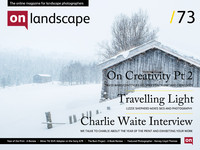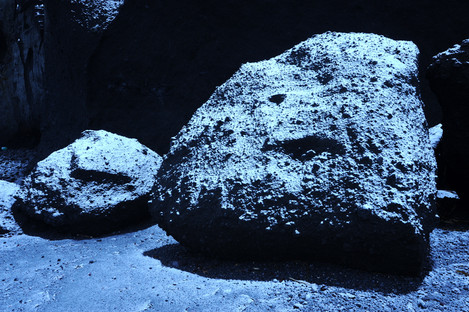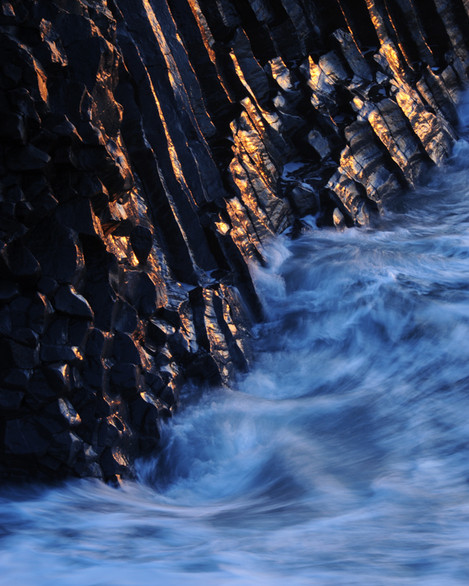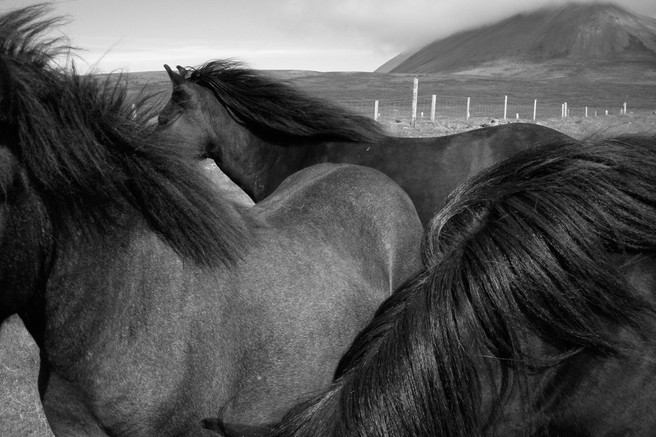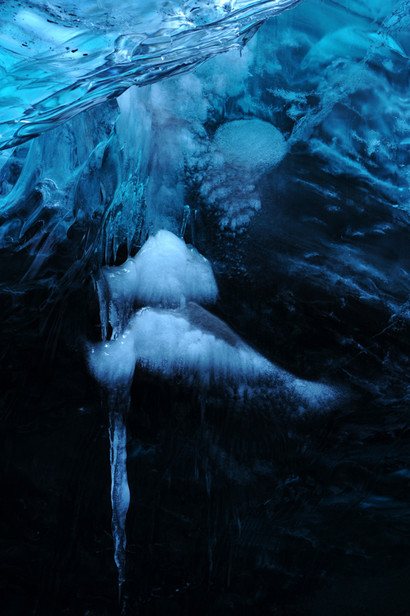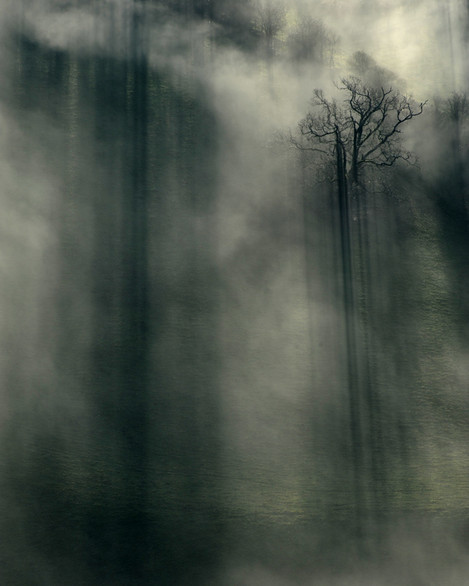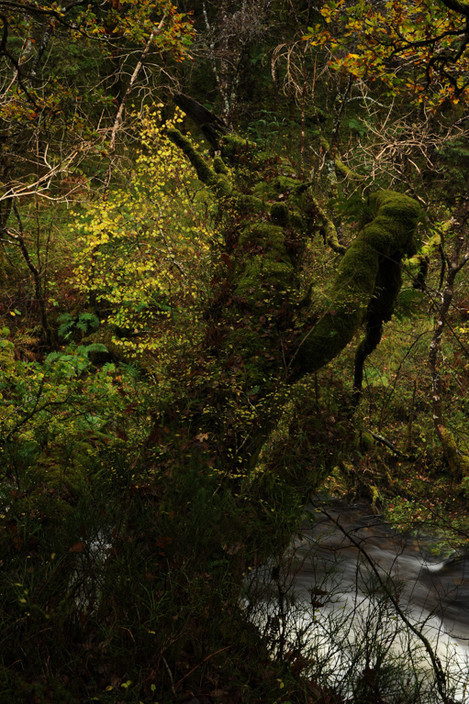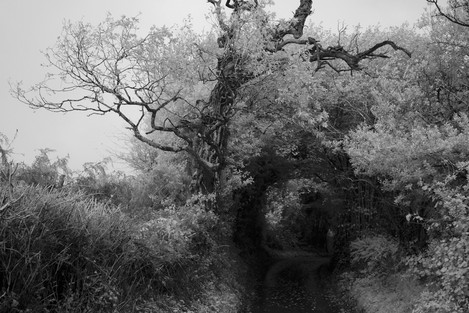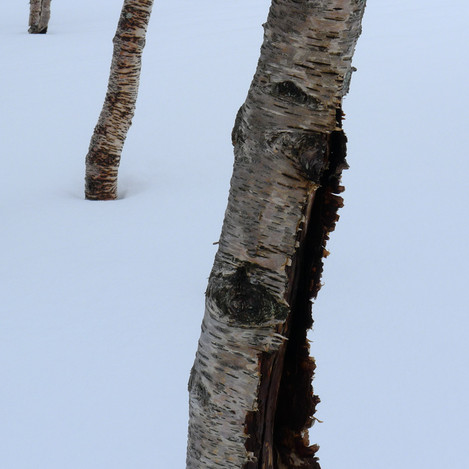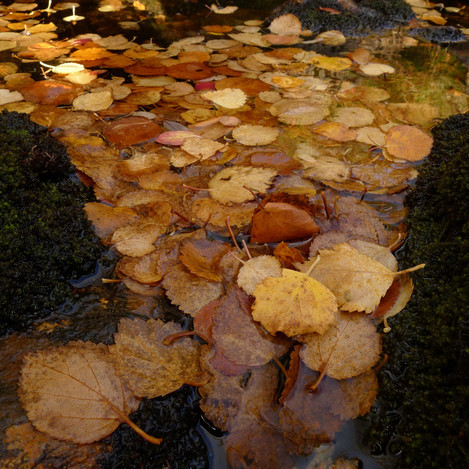Featured Photographer

Harvey Lloyd-Thomas
A photographer who enjoys exploring wilder and remoter landscapes, searching out unseen details, while attempting the occasional photographic vista. Also partial to the odd image of rust and decay
Can you tell me a little about your education, childhood passions, early exposure to photography and vocation?
As a child I was always into painting and drawing, along with Lego and later programming my ZX81. I did Art at A Level (along with Maths and Physics) and at one point thought of going on to do an Art Foundation Course, but ended up studying for an engineering degree and then a computing PhD at the University of Bristol.
Other than the family 110 format film camera for holiday snaps, my first real camera was a Praktica 35mm SLR given to me as a birthday present shortly after I started at university (25 years ago now). Initially it was mainly used to document my hill walking trips to the Lake District and Scotland, then gradually became an outlet for creative urges. Photography being a more immediate and practical medium compared to painting and drawing: not having the space in a student house that I was used to having in the art rooms at school.
Apart from in the sixth form when I learnt the basics of B&W developing and printing (to record source material and produce studies for proper art pieces) my film experience is purely of 35mm colour negative developed and printed by Boots or Jessops. I have never shot a single frame of transparency film in my life. I shot my last roll of film in 2007 and have been using DSLRs for nearly 10 years now.
I gradually learnt the technical side of photography by trial and error, with hints from various books (this being before photography resources on the Web became widely available). On the composition side, I’ve always found this to be instinctive, guided by my interests in the arts and design in general.
What are you most proud of in your photography?
When I take an image I like. I don’t generally worry about what other people may think of my images, but don’t deny it’s nice to receive praise if offered.
Being a bit different. When I manage to take/make (never sure what the correct terminology is supposed to be) images of a location which are not like anyone else's I've seen. Perhaps partly helped by only relatively recently in my photographic journey realising that as a landscape photographer I’m supposed to be obsessed with taking coastal sunrise/sunset pictures :-)
In most photographers lives there are 'epiphanic' moments where things become clear, or new directions are formed. What were your two main moments and how did they change your photography?
Gordon Stainforth's book Eyes to the Hills (although revisiting it, the photographs perhaps don't stand up in their own right quite as well as I originally remember, but definitely a step on from the record shots of hills and mountains I was taking at the time). First time I remember recognising a particular type of image I wanted to be making. It gave an initial direction to my photography, although a direction I have since diverged from. Also coming across Colin Prior's first book Highland Wilderness made me aware of the heights that could be achieved in genre of mountain photography.
Secondly and far more recently, buying a Lumix LX5 which has a physical switch for different aspect ratios (rather than it being an option hidden deep in menus) which encouraged experimentation with square and panoramic formats, away from the 3:2 aspect ratio I was used to. Plus the LX5's close focus ability is something that equally led to experimentation and has become a key element of my photography. (Why do people bother anymore with macro lenses for DSLRs?) While the LX5 has encouraged me to play, digital in general was also a major player in the development of my photography. Specifically buying my first DSLR (a Nikon D50) with the immediate feedback it gave and the freedom to take far more pictures than I would have ever on film. And the complete end-to-end control that is possible with digital.
Tell me about why you love landscape photography? A little background on what your first passions were, what you studied and what job you ended up doing.
Photography for me has combined interests in art and design, the outdoors and being in wild landscapes, along with technology. Have always enjoyed the outdoors and walking. Guess my interest in technology could be said to have started with Lego and progressed ultimately via my degree education to a job as a computer systems/software engineer currently working in the area of DAB digital radio receiver technology.
So photography combines art and technology; with landscape photography combining photography, the enjoyment of the outdoors and wanting to somehow record my love of being in wild and/or remote locations in the mountains or by the sea. To these ends I’m lucky to find myself living at the bottom of the Wye Valley on the edge of an Area of Outstanding Natural Beauty.
Could you tell us a little about the cameras and lenses you typically take on a trip and how they affect your photography?
I have too many cameras and lenses!
My main camera is a Nikon D700, along with my trusty Lumix LX5 and my newest camera is a Micro Four Thirds Lumix GX7.
The D700 gets used when I know I might need the high ISO performance (i.e. for aurora) or fast AF (i.e. for wildlife) or if expecting bad or cold weather (I know I can manipulate the controls easily wearing gloves). While I have a large collection of manual and autofocus lenses (from an 8mm circular fisheye through to a 600mm mirror lens), I mostly seem to end up with my old Nikkor 28-105mm zoom on the D700. Recently I’ve been liking the look I get with my Voigtländer 90mm prime and I need to play more with the Hartblei 45mm Super-Rotator tilt/shift lens I own.
The Micro Four Thirds gear gets used when I don't what to carry so much bulk/weight, most often using the original Panasonic 14-45mm (28-90mm equivalent) zoom or the Olympus 45mm (90mm equivalent) prime. I also have an old Micro Four Thirds body which I’ve had converted for IR photography, where having an electronic rather than optical viewfinder comes into its own in visualising the IR effect.
Then there's my LX5 which tends to get taken everywhere and shines in its macro capabilities.
Sometimes locally I will deliberately go out for a walk with just the one camera and one lens, as a semi-challenge to see what I can do with the combination. If I'm going on dedicated photography trips I will take a wider selection of lenses, etc., but not owning a car such trips usually involve having to carry all my gear and other luggage at some point in the journey, which limits what I take (which I think is actually a good discipline).
What sort of post processing do you undertake on your pictures? Give me an idea of your workflow.
I have a confession to make: I don't do any post processing!
On all my cameras I shoot RAW + Fine JPEG and the RAW files then just sit there on my hard drives. I have Lightroom on my PC, but with a day job of sitting in front of a computer, I never really feel like sitting in front of a computer again in the evenings. At weekends and during holidays I would rather be out taking more images than processing the ones I've already taken.
So images on my website are currently the in-camera JPEGs resized with some one-size fits all auto-tone/curve adjustments applied by scripts I've written to drive the image processing utility ImageMagick. Although I'm certain many of my images could be improved upon once I find the time to get up the Lightroom learning curve.
Do you get many of your pictures printed and, if at all, where/how do you get them printed?
I own an A3 Epson inkjet (although a couple of generations old now) and print occasionally. When I do it reminds me firstly, that images look good printed and I should print more, secondly, that I need to learn how to get the best from it. Various friends and family have some of my prints on their walls, myself I don't currently have any. Have also make a couple of blurb books which I keep meaning to do more of. I think book form is one of the best ways to present/view photography.
Tell me about the photographers that inspire you most. What books stimulated your interest in photography and who drove you forward, directly or indirectly, as you developed?
Well, to start with Ansel Adams obviously, specifically his Yosemite and the Range of Light book. Books of mountain photography by Gordon Stainforth and Colin Prior I've already mentioned and then Joe Cornish's First Light. Relatively recently I discovered and admire Eliot Porter's work and I’m slowly building a library of secondhand books of his. Also an early general stimulation of interest in all different styles and genres of photography was a series of Time-Life Photography Year books from the 1970s in the art rooms in the sixth form (which I've acquired my own secondhand copies of since).
Of current photographers I believe my approach and images are perhaps most akin to David Ward's (although not saying I’m as good a photographer and definitely have no plans to move over to the Dark Slide). Not sure to what extent my style is partly due to his influence and partly that I admire his work since it has parallels with what I already found myself doing. I definitely share David's unplanned approach to finding images.
Using tools such as The Photographer’s Ephemeris to plan specific images is not something that really occurs to me to do. (I do admit though to keeping an eye on predicted extreme high and low tides which may be worth a stroll from home down to the river Wye, with the promise of seeing familiar territory in unfamiliar conditions). However, I often revisit locations, albeit sometimes years apart, when having prior knowledge of the possibilities at a location on return trips works for me. Not so much in planning in advance what images I want to take, but rather in knowing in advance places I want to explore further.
Tell me what your favourite two or three photographs are and a little bit about them.
Avich Falls, Argyll, Scotland. Nikon D700 with Nikkor 28-105mm.
This was taken in the rain with a plastic bag over the camera. It was a fairly quick photo to take: walking along I saw the old tree arcing over the river and recognised there was an image there, set the camera up with very limited playing around with the positioning from where I originally placed the tripod and took the shot. I like the chaos of it, but it also seems to work in having some structure and balance. The small glimpse of the river in the corner is I think essential to the image working.
Penterry Lane, Wye Valley. IR converted Lumix G1 with Sigma 30mm (60mm equivalent).
I was out for a local walk on an overcast day with just my IR camera and noted the tunnel effect of the lane through the trees. I took two other shots: one further back of a wider view down the road and one tighter in. When reviewing the images at the time I initially preferred the others, but this framing grew on me since. The somewhat dull look is the in-camera B&W conversion as is, which I actually like. I also like the fact that it's not immediately, obviously an IR image, but just that there is something slightly odd about the rendering. Like the Argyll image, I like the controlled/anchored chaos/complexity of it.
Now for something completely different. Snow Birch, Kvaløya, Norway. Lumix LX5.
This I think is perhaps more representative of more of the images I make. Taken on an island off Tromsø in Arctic Norway. The location is a stretch of birch woodland I'd previously visited in the summer and have since visited in the autumn. Taken handheld where I shot a sequence of similar compositions as square in-camera. This image had the best balance of the set. The look I was after was inspired by wood block prints I’d seen by Laura Boswell.
Just noticed there seems to be a bit of a tree theme going on here…
If you were told you couldn't do anything photography related for a week, what would you end up doing? (i.e. Do you have a hobby other than photography?)
Go for walks up the Wye Valley. Or if the weather was really that bad, reacquaint myself with all the music in my LP/CD/MP3 collection that I've forgotten I own. And the washing-up always seems to need doing...
What sorts of things do you think might challenge you in the future or do you have any photographs or styles that you want to investigate? Where do you see your photography going in terms of subject and style?
Hope this doesn't sound too arrogant, but think I have the beginnings of my own distinctive style.
Currently I’m trying to find a balance between taking time over an image and being spontaneous. The latter is my more usual way of working, but I sometimes kick myself that some aspects of an image are not as perfect as they could be, due to issues that were under my control at the time the photo was taken and I could have avoided if I had slowed down and taken more care over the shot. However, conversely when I deliberately try slowing down and working a scene I usually find that what I end up with is nothing special. Often the initial image, if I take several variations of a subject or scene, will be my favourite.
Some other goals: pay more attention to the quality of light, continue my ongoing local Wye Valley project (if that's not too grand a word to use).
And maybe use a tripod more often.
Some thoughts about vistas versus details?
A friend has described me as a photographer of artistic rocks (although she did then ask me to take photos at her wedding), but I also want to somehow take pictures that are recognisably of a place, rather than travelling to destinations such as Iceland and Norway and returning with yet more rock abstracts...
Taking successful vistas is something I struggle with. With my approach being self-taught over the years, the normal landscape conventions of golden hour light, tripod and ND grads passed me by until recently. I have tended to solve the problem of excessive contrast between land and sky by coming up with compositions that avoid including the sky. So my focus on producing more detail/abstract style images has partly been forced on me for technical reasons. It was never a conscious decision to head in this direction. So my style in a nutshell: landscapes without any sky!
Also an element of laziness in that wider views don't always lend themselves to my more spontaneous approach, as you often need to faff about with filters etc. and that can imply using a tripod, but every now and again I will take an image of a wider view which I'm really happy with and so I persevere.
While the artistic rocks have turned out to be a gateway drug leading to rust and decay :-)
Who do you think we should feature as our next photographer?
Andy Tibbetts who photographs the landscapes and wildlife of Knoydart and the Small Isles of northwest Scotland.
Many thanks to Harvey and you can see more of his work at his website or on his Flickr stream.

